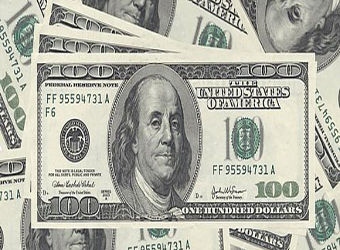The dollar gained on Friday after a report showed the U.S. economy created far more jobs than expected in June and previous months, keeping the Federal Reserve on track to raise interest rates at least one more time this year.
Following the jobs report, the dollar rose to two-month highs against the yen, on pace to post its largest weekly percentage gain since late April. The greenback also rose to a more than one-week peak against sterling.
Friday’s data showed U.S. non-farm payrolls jumped by 222,000 jobs last month, beating economists’ expectations for a 179,000 gain. Data for April and May was revised to show 47,000 more jobs created than previously reported.
“The above-consensus payroll figure … will augment the Fed’s decision to begin balance sheet reduction sooner than later,” said Charlie Ripley, investment strategist at Allianz Investment Management in Minneapolis.
“On balance, the labor market continues to be solid and despite the softer inflation data as of late, the solid employment data should keep the Fed on course for policy normalization,” he said.
Marvin Loh, senior global markets strategist at BNY Mellon in Boston, pointed out that hourly earnings’ 2.5 percent gain from a year earlier were “disappointing,” with growth slower than at the start of the year and mostly stagnant over the past several months.
But Allianz’s Ripley said tighter labor markets with the economy headed toward full employment should drive further wage increases.
The dollar initially weakened to 113.54 yen following the jobs report from 113.74 yen minutes before the data’s release, as investors focused mostly on the inflation implications of the average earnings growth. It was last at 113.88, up 0.60 percent.
The euro, on the other hand, fell to around $1.1403, from $1.1411 ahead of the jobs report, and was last at $1.14, down 0.19 percent. That pushed the dollar index up 0.21 percent at 96.00.
Sterling, meanwhile, fell to a more than one-week low of $1.2871 before edging up 0.01 percent to $1.289.
Source: Reuters



